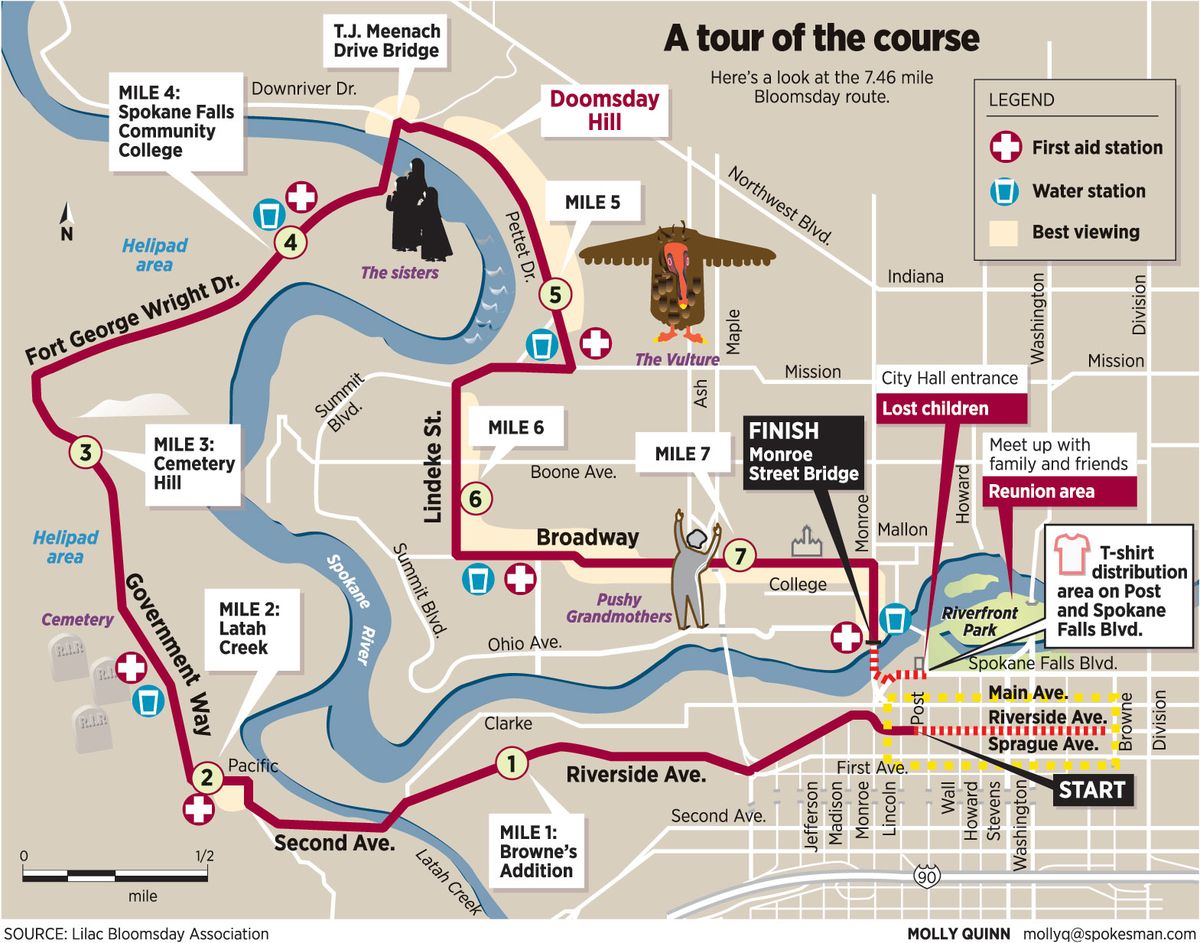Older competitors strive for edge on race day
Eastern Washington University professors and Bloomsday runners Grant Smith, 72, left, and Scott Melville, 62, train Tuesday near Cheney. (Colin Mulvany)
With three days to go until Sunday’s big race, Bloomsday runners are loading up on carbohydrates to prepare for the 7.46-mile trek.
But one group of runners is probably just as focused on getting daily doses of glucosamine: the serious senior runners who see Bloomsday as another chance to leave 50-somethings in the dust.
Lilac Bloomsday organizers predict between 49,000 and 50,000 people will come out and finish the race on Sunday.
They say the number of older runners – most of whom have finished previous Bloomsdays – will likely be up from past races.
The number of gray-haired entrants is clearly on the rise. Last year there were 1,833 men 60 and older who finished the race, compared with 1,385 in 2003. The women’s group saw the same trend: 1,810 women 60 and older finished last year, compared with 1,495 in 2003, according to Lilac Bloomsday Association records.
Bloomsday Race Director Don Kardong said he can’t track how many of those seniors run versus walk the course, but, “I’m sure we have more runners in the post-60 set than we did years ago.”
Growth in the older-runner contingent results in part from the graying of the community. Another factor, said Kardong, is that more people are staying healthy enough to keep running later in life.
The over-60 running crowd is also marked by a strong desire to run hard and have a good time, in that order.
“I’m not humble. I have to get back and finish Bloomsday in under one hour,” said Phyllis Nelson, 62, an Edmonds, Wash., music teacher who won the women’s 60-64 age group in 2008 and 2009. Nelson’s victory last year was disappointing, though, because it was slower than she wanted – 1 hour and 7 seconds.
“I’ve been running a killer hill three times a week so that I can come over and get under 60 minutes,” she said.
Grant Smith, 72, and Scott Melville, 62, have each won their age divisions in previous Bloomsdays. The two say they’ll try hard to win their divisions again, in large part because that’s just what they do when they put on their singlets.
Both run on Eastern Washington University’s Corporate Cup team and have helped EWU’s Red team win the Corporate Cup championship.
“I can’t play basketball or tennis like I used to,” said Melville, a professor in the physical education, health and recreation department. That’s why he now takes running fairly seriously.
His approach to Bloomsday is still fun, but once the gun goes off, Melville said, he puts his head down and tries to push himself to his limit.
“I try to get out to a good speed as fast as I can and try to maintain it as long as I can,” Melville said.
Smith, Melville’s running companion and an EWU English professor, said he’s trained seriously again this year. Like most older Bloomsday runners, he tracks who the best competitors are in his group.
Smith knows, for instance, that the guy who beat him last year by nearly three minutes, Bill Iffrig from Everett, just turned 75.
“He’s in the next-older group,” said Smith, which opens the door for Smith to move up from his second-place finish last year.
Smith and other serious senior runners know they’re in an in-between group of Bloomies: They’re nowhere near the elite runners who can win cash for their efforts, but they’re interested in more than the T-shirt. Most of them, Smith said, want to gain bragging rights and the satisfaction of finishing the race with their knees not hurting and a smile on their faces.
Even so, don’t be surprised to see runners like 66-year-old Bill Greene bearing down, trying to beat you at the finish line on Sunday. Greene, a pediatrician at the Veradale office of Group Health, is out to improve on his 53-minute, 47-second finish in 2009. That left him in third place in his age group.
This year he hopes for second, at least.
“I like to compete,” Greene said. “And if I see anyone in silver hair near me at the finish, I’ll make a total effort to get past him.”

